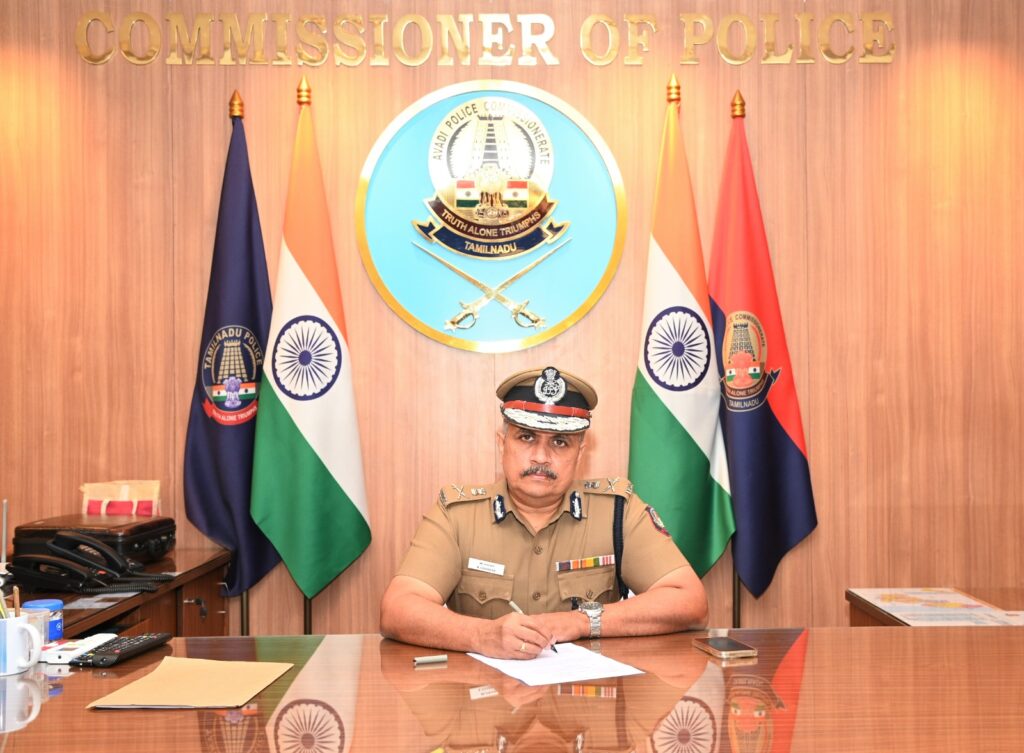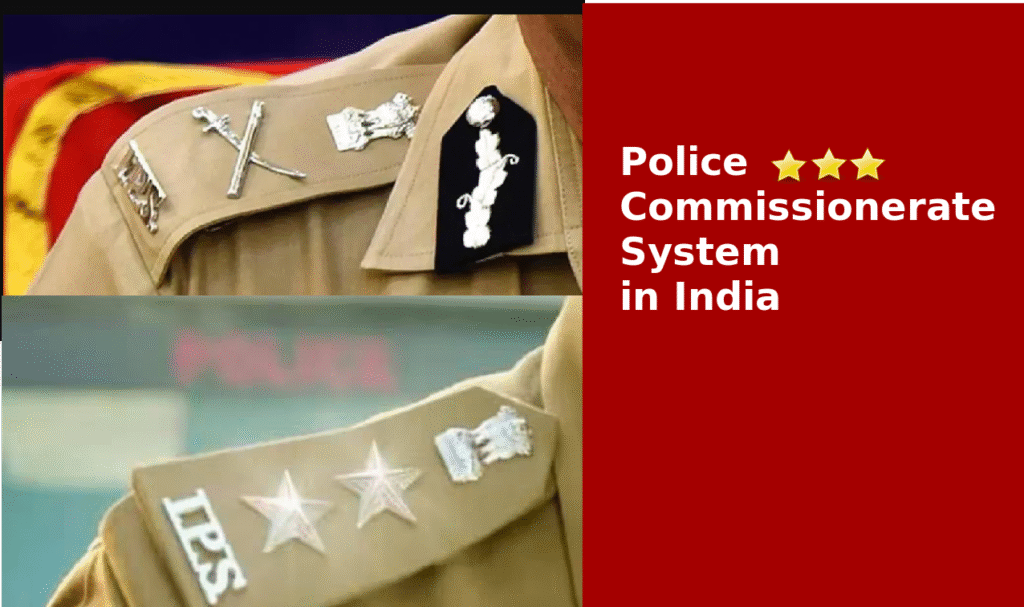The Police Commissionerate System is gaining traction across major Indian cities — but what exactly is it, and how does it change policing on the ground? Recently, Uttar Pradesh announced the extension of this system to Ghaziabad, Agra, and Prayagraj, joining cities like Lucknow, Kanpur, Noida, and Varanasi, where it is already operational. Here’s a closer look at this evolving police structure.
The Origins of the Police Commissionerate System
The system dates back to the British colonial era, when it was first implemented in Bombay (now Mumbai), Calcutta (now Kolkata), and Madras (now Chennai). Back then, the Police Commissioner had sweeping judicial powers under the Police Act of 1861.
Post-independence, the system gradually spread to other major Indian cities. Today, it is regarded as an efficient mechanism for managing law and order in large urban centers.
What is the Police Commissionerate System?
The Commissionerate system dates back to colonial India when the British first implemented it in Bombay (now Mumbai), Calcutta (now Kolkata), and Madras (now Chennai). It was originally based on the Police Act of 1861. In this system, key powers of maintaining law and order — which traditionally rested with the District Magistrate (DM) — are transferred directly to the Police Commissioner.

In simple terms, this means the police no longer need to seek approval from the DM to take crucial decisions related to public safety, crowd control, or criminal investigations. The Police Commissioner, usually an officer of ADG rank, holds independent authority under the Criminal Procedure Code (CrPC) to issue orders in situations like protests, riots, or emergencies.
- UP Judiciary Syllabus 2025 PDF – UP PCS J Exam Details
- MPPSC Syllabus 2025 PDF – Prelims & Mains Exam Pattern
- UPPSC RO ARO Syllabus 2025 Exam Pattern
Key Powers of the Commissioner
- Authority to issue arms licenses, bar licenses, and permits for public events.
- Power to impose Section 144, conduct lathi charges, or order police firing if necessary.
- Control over transfers and postings of police officers within their jurisdiction.
- Ability to take swift decisions on matters of public order without waiting for the DM’s approval.

The Police Commissioner is supported by a hierarchy of officers: Joint Commissioner (IG rank), Additional Commissioner (DIG rank), Deputy Commissioners (SP/SSP rank), and Assistant Commissioners (ASP rank), ensuring smooth functioning across city zones.
Why is the Commissionerate System Being Adopted?
With India’s urban centers growing rapidly, the traditional dual control structure — where the DM and SP (Superintendent of Police) jointly manage law and order — often leads to delays in decision-making.
In contrast, the Commissionerate model enables faster, more efficient response to evolving situations in high-density areas. For example:
- In case of a sudden riot, the Police Commissioner can take immediate action without bureaucratic hurdles.
- Licenses and permissions are processed more swiftly.
- Public grievances can be addressed in a more streamlined way.
A 1983 report by the National Police Commission had already recommended this model for cities with populations over 1 million — a threshold now easily exceeded in dozens of Indian urban areas.
Criticism & Concerns
However, this system is not without its critics. Some civil rights groups argue that concentrating so much power in one office raises concerns about potential misuse, human rights violations, or excessive force. There are also debates about the lack of checks and balances, especially when compared to the traditional system where police actions required DM approval.
The Road Ahead
Despite concerns, cities like Mumbai and Delhi have shown positive results under this system, with improved crime control and better management of public events. With Noida and other cities now adopting it, experts believe the system will further enhance coordination between city police forces — especially in NCR regions, where seamless collaboration between Delhi and neighboring areas is crucial.
At the same time, the Police Commissioner remains answerable to the state government and their actions can still be challenged in courts — providing a degree of accountability that addresses fears of misuse.
As Indian cities continue to expand, the Commissionerate system is likely to become an even more vital tool for modern urban policing.
Why Is the System Being Adopted?
As Indian cities grow, their population density and urban challenges have also increased. The dual-control system (DM and SP sharing law and order responsibilities) often delays decision-making in fast-changing situations like riots or large-scale protests.
The Police Commissionerate model allows:
- Faster, unified decision-making
- Quick response to crises
- Streamlined administration of licenses and permissions
Recognizing these advantages, the National Police Commission’s 1983 report recommended this system for cities with populations exceeding 1 million.
Currently, according to a 2018 BPRD report, the system is operational in 61 cities across 15 states.
- How IIT Delhi Reclaimed the Top Spot Among Indian Institutions in QS World University Rankings 2026 After 8 Years
- RPF Constable Result 2025 OUT: Direct Link to Merit List, Scorecard, PET/PMT Dates @rrbcdg.gov.in
- RSSB Village Development Officer VDO Online Form 2025
The Current District-Level System
Under Article 7 of the Indian Constitution, policing and public order are state subjects. Traditionally, states followed a dual system, with DMs and SPs jointly responsible for law and order. While this system ensures checks and balances, coordination issues sometimes arise during emergencies.
The Commissionerate model eliminates this duality, giving clear, direct responsibility to the Police Commissioner, who remains accountable to the state government.
Legal Powers of the Commissioner
Under CrPC Sections 107–116, 144, 145, and Section 20, the Police Commissioner has judicial and executive powers. Additional Commissioners have similar powers under Section 21.
They can authorize use of force, enforce NSA (National Security Act) or Gangster Acts, and issue or revoke various licenses within their jurisdiction.
While the system improves efficiency, critics argue:
- It centralizes power, reducing checks and balances.
- There is a risk of misuse of force or human rights violations.
- In sensitive matters (arrests, crowd control), decisions rest solely with the Commissioner, raising concerns over accountability.
Civil rights activists also warn that governments could use this system to exert more direct control over police forces.
The Way Forward
Cities like Mumbai have demonstrated the system’s effectiveness in managing crime and public order.
In Lucknow and Noida, the Commissionerate model is expected to strengthen law enforcement, especially in cooperation with neighboring forces like Delhi Police — crucial for the NCR (National Capital Region).
Importantly, while the Police Commissioner holds significant powers, their decisions are subject to judicial review. Orders can be challenged in court, ensuring accountability and protecting citizens’ rights.
As Indian cities continue to grow, the Commissionerate System is likely to become an essential tool for modern urban policing across the country.
Here is a list of cities in Uttar Pradesh (UP) where the Police Commissionerate System is implemented (as of 2025):
- Lucknow
- Noida (Gautam Buddh Nagar)
- Ghaziabad
- Varanasi
- Kanpur
- Agra
- Prayagraj (Allahabad)
- Meerut
- Bareilly
- Gorakhpur







